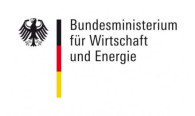ROSC

About the Research Program
ROSC: Rubidium Optical Space Clocks
The employment of optical frequency combs in space has a large potential for a variety of missions. These include scientific testing of fundamental physics, precision lidar measurements for atmospheric trace gas detection, and large-scale deployment as clockwork in optical clocks for reference and time distribution in GNSS constellations.
ROSC saw the development of key technologies for optical clocks, based on the 2-photon transition in rubidium. Clocks based on this transition can outperform the stability and accuracy of the current generation of clocks in Galileo and GPS satellites. Yet, they also show the highest potential to dramatically reduce the SWaP (Wize, Weight and Power) Budget of optical clocks that are currently operated on earth.
In ROSC, Menlo Systems increased the technology readiness level (TRL) of the optical frequency comb with a focus on hardening the opto-electronics hardware against the space environment. We build a highly integrated system with minimal external connections, to be operated together with the physics package from the Humbold University and the clock laser from the Ferdinand-Braun-Institute in the rubidium optical space clock. The comb operates autonomously and communicates over a low bandwidth connection via qualified PUS protocol.
The increase in TRL has made it possible to target an in-orbit demonstration of the frequency comb.

Optical frequency comb developed by Menlo Systems within the frame of the ROSC project
Related website:
https://www.physik.hu-berlin.de/en/qom/research/ROSCProject
Project partners:
 |
 |
This work is supported by the German Space Agency DLR with funds provided by the Federal Ministry of Economics and Technology (BMWi) under grant number 50RK1970.
 |
 |